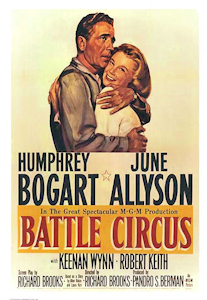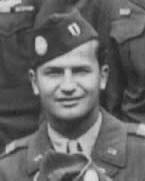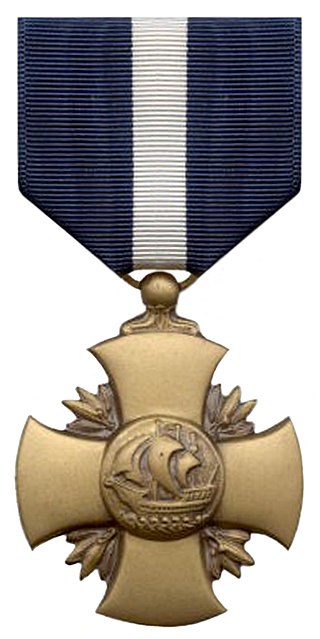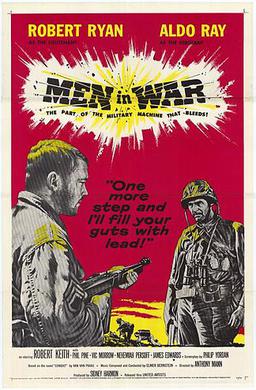
During the American Civil War, the United States Army, the land force that fought to preserve the collective Union of the states, was often referred to as the Union Army, the Grand Army of the Republic, the Federal Army, or the Northern Army. It proved essential to the restoration and preservation of the United States as a working, viable republic.

Harold Keith "Johnny" Johnson was a United States Army general who served as Chief of Staff of the United States Army from 1964 to 1968. Regarded as a premier tactician, Johnson became skeptical that the level of resources given to the Vietnam War, much of which went into 'find, fix, and destroy the big main force units' operations, could deliver victory. Johnson came to believe that the Communist forces held a trump card, because they controlled whether there were engagements with U.S. forces, giving an option to simply avoid battle with U.S. forces if the situation warranted it.

Battle Circus is a 1953 American war film directed by Richard Brooks, who also co-wrote the screenplay with married writing duo Laura Kerr and Allen Rivkin. The movie stars Humphrey Bogart and June Allyson, and costars Keenan Wynn and Robert Keith.
The 602 Commando Company is a special operations unit of the Argentine Army.

The Regimental Combat Team 31 (RCT-31), commonly referred to as Task Force Faith of the "Chosin Few", is a United States Army unit known for its role in the Battle of Chosin Reservoir during the Korean War where 90-95% of its force was killed, wounded, and/or captured on the eastern side of the reservoir.

Lieutenant Colonel Ronald Charles Speirs was a United States Army officer who served in the 506th Parachute Infantry Regiment of the 101st Airborne Division during World War II. He was initially assigned as a platoon leader in B Company of the 1st Battalion of the 506th Parachute Infantry Regiment. Speirs was reassigned to D Company of the 2nd Battalion before the invasion of Normandy in June 1944 and later assigned as commander of E Company during an assault on Foy, Belgium, after the siege of Bastogne was broken during the Battle of the Bulge. He finished the war in the European Theater as a captain. Speirs served in the Korean War, as a major commanding a rifle company and as a staff officer. He later became the American governor for Spandau Prison in Berlin. He retired as a lieutenant colonel.

Colonel Ruby Bradley was a United States Army Nurse Corps officer, a prisoner of the Japanese in World War II, and one of the most decorated women in the United States military. She was a native of Spencer, West Virginia but lived in Falls Church, Virginia, for over 50 years.

The Battle of Hill Eerie refers to several Korean War engagements between the United Nations Command (UN) forces and the Chinese People's Volunteer Army (PVA) in 1952 at Hill Eerie, a military outpost about 10 miles (16 km) west of Ch'orwon. It was taken several times by both sides; each sabotaging the others' position.

Puerto Ricans have served as members of the United States Armed Forces and have fought in every major conflict in which the United States has been involved from World War I onward. Many Puerto Ricans, including those of Puerto Rican descent, have distinguished themselves during combat as members of the five branches of the U.S. Military, the Army, Marines, Navy, Air Force and the Coast Guard.

Puerto Ricans have served as members of the United States Armed Forces and have fought in every major conflict in which the United States has been involved from World War I onward. Many Puerto Ricans, including those of Puerto Rican descent, have distinguished themselves during combat as members of the five branches of the U.S. Military, the Army, Marines, Navy, Air Force and the Coast Guard.

Cease Fire! is a 1953 war movie directed by Owen Crump. The film featured real ammunition and real soldiers that were filmed on location in Korea, and was the first 3D war movie filmed in an actual theatre of operations.

Hispanic Americans, also referred to as Latinos, served in all elements of the American armed forces in the war. They fought in every major American battle in the war. Between 400,000 and 500,000 Hispanic Americans served in the U.S. Armed Forces during World War II, out of a total of 16,000,000, constituting 3.1% to 3.2% of the U.S. Armed Forces. The exact number is unknown as, at the time, Hispanics were not tabulated separately, but were included in the general white population census count. Separate statistics were kept for African Americans and Asian Americans.
Hispanics in the United States Marine Corps, such as Private France Silva who during the Boxer Rebellion became the first Marine of the thirteen Marines of Latin American descent to be awarded the Medal of Honor, and Private First Class Guy Gabaldon who is credited with capturing over 1,000 enemy soldiers and civilians during World War II, have distinguished themselves in combat. Hispanics have participated as members of the United States Marine Corps in the Boxer Rebellion, World War I, the American intervention in Latin America also known as the Banana Wars, World War II, the Korean War, the Vietnam War, the Gulf War and most recently in the military campaigns of Afghanistan and Iraq.

Men in War is a 1957 black and white American war film about the Korean War directed by Anthony Mann and starring Robert Ryan and Aldo Ray as the leaders of a small detachment of American soldiers cut off and desperately trying to rejoin their division. The events of the film take place on one day; 6 September 1950. The picture was based on a 1949 World War II novel of the Normandy campaign Day Without End by Van Van Praag that was retitled Combat in 1951. Made soon after the end of the Korean War it was still very much in the minds of the American public.

Hold Back the Night is a 1956 American war film about the Korean War based on the 1951 novel by Pat Frank, who had been a war correspondent in Korea. The film was directed by Allan Dwan; his third film with John Payne and his third film about the United States Marine Corps, the others being Abroad with Two Yanks (1944) and Sands of Iwo Jima (1949).

The 65th Infantry Regiment, nicknamed "The Borinqueneers" during the Korean War for the original Arawak Indian name for Puerto Rico (Borinquen), is a Puerto Rican regiment of the United States Army. The regiment's motto is Honor et Fidelitas, Latin for Honor and Fidelity. The Army Appropriation Bill created by an act of Congress on 2 March 1899 authorized the creation of the first body of native troops in Puerto Rico. On 30 June 1901, the "Porto Rico Provisional Regiment of Infantry" was organized. On 1 July 1908, Congress incorporated the regiment into the Regular Army as the Puerto Rico Regiment of Infantry, United States Army. On 14 May 1917, the regiment was activated and additional men were assigned, with the unit being sent to serve at Panama. On 4 June 1920, the regiment was renamed 65th Infantry. During World War II, the regiment saw action throughout Europe, especially France and Germany, participating in Naples-Foggia, Rome-Arno and Rhin. Several Purple Hearts were awarded posthumously to members of the 65th Regiment.

Mission Over Korea is a 1953 American war film released by Columbia Pictures, directed by Fred F. Sears, from a story by former war correspondent Richard Tregaskis, author of Guadalcanal Diary. The film stars John Hodiak, John Derek, Audrey Totter and Maureen O'Sullivan.
The 1917 New Year Honours were appointments by King George V to various orders and honours to reward and highlight good works by citizens of the British Empire. The appointments were published in several editions of The London Gazette in January and February.
The 1919 New Year Honours were appointments by King George V to various orders and honours to reward and highlight good works by citizens of the British Empire. The appointments were published in The London Gazette and The Times in January 1919.















